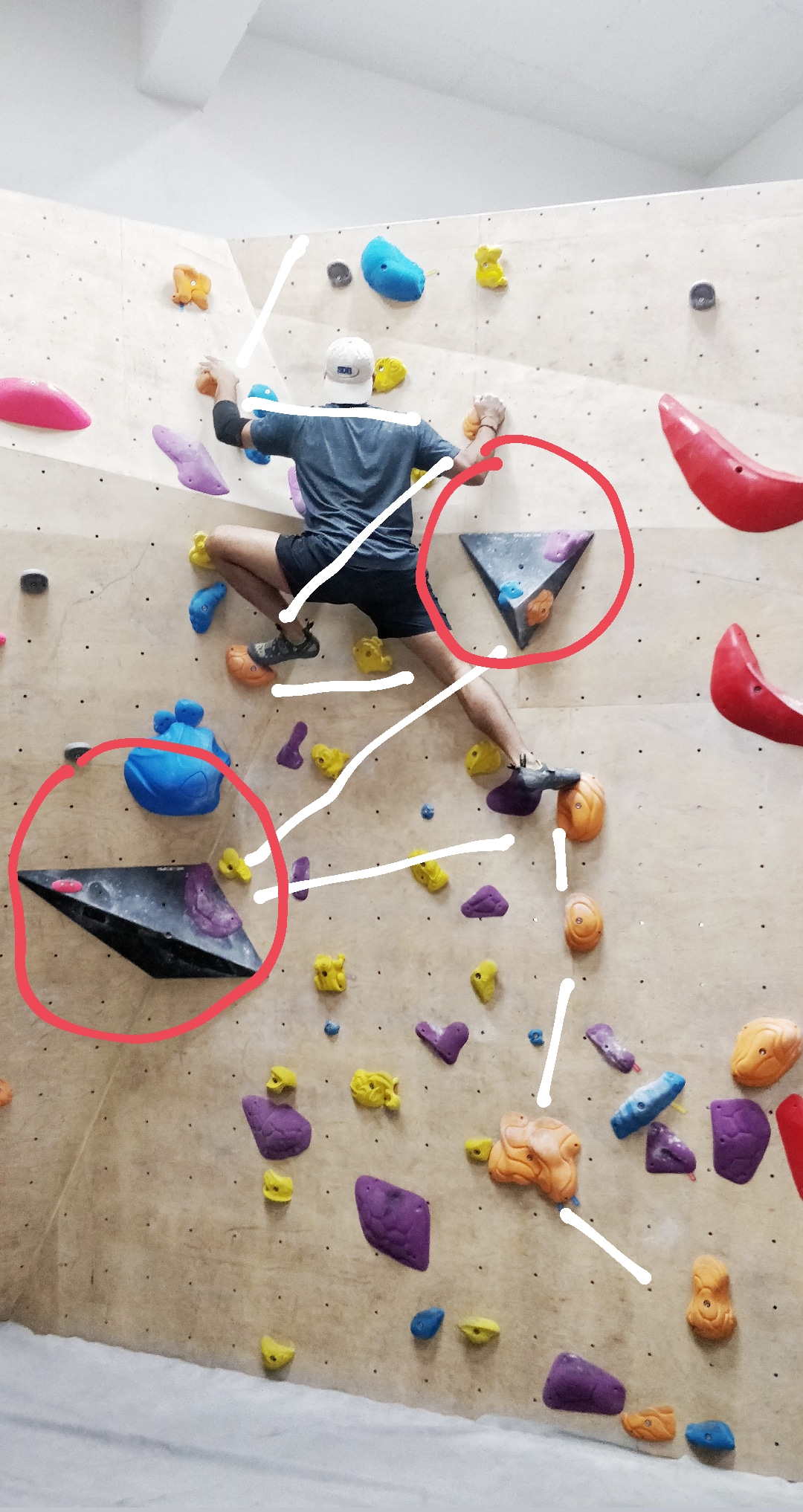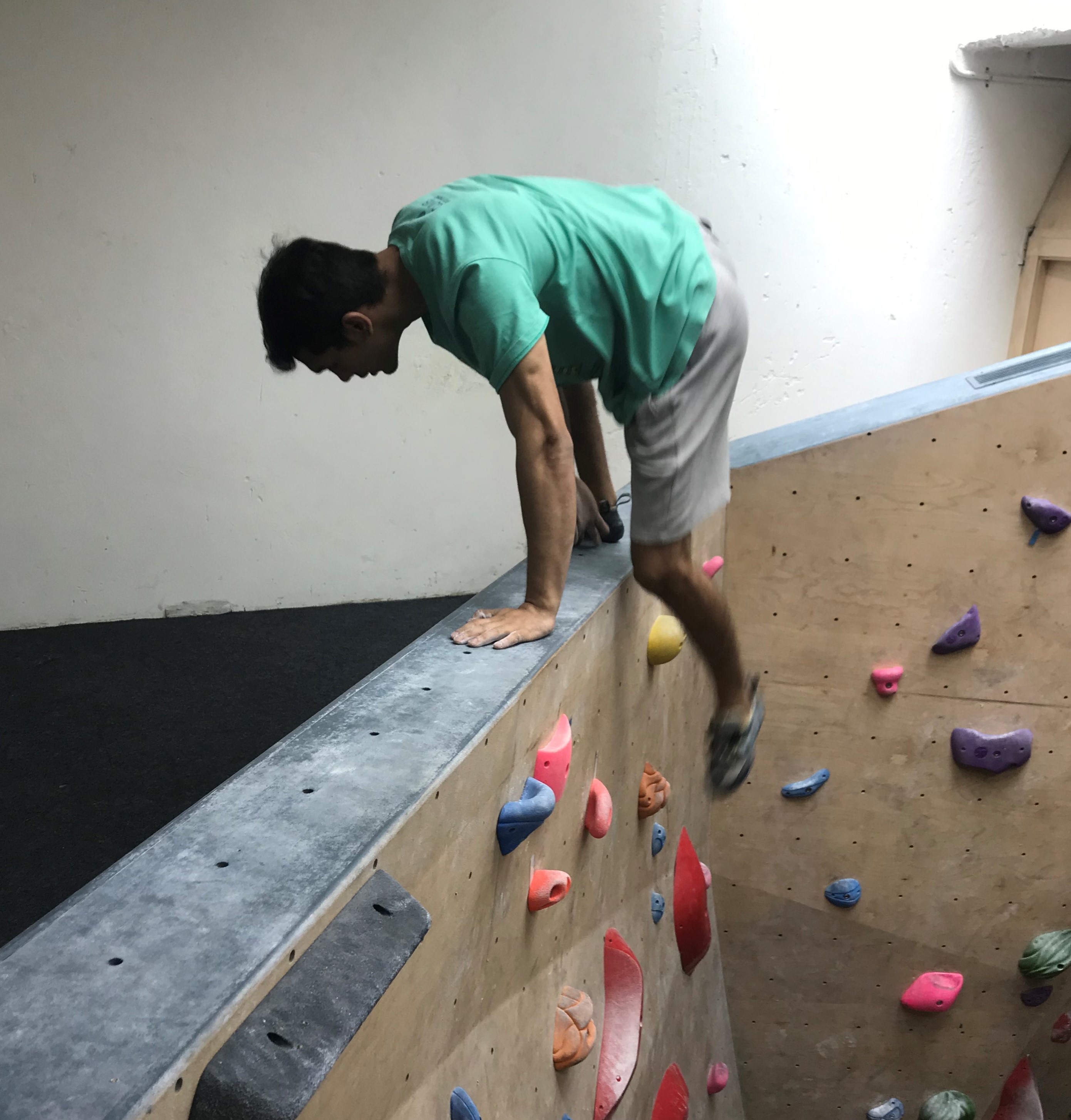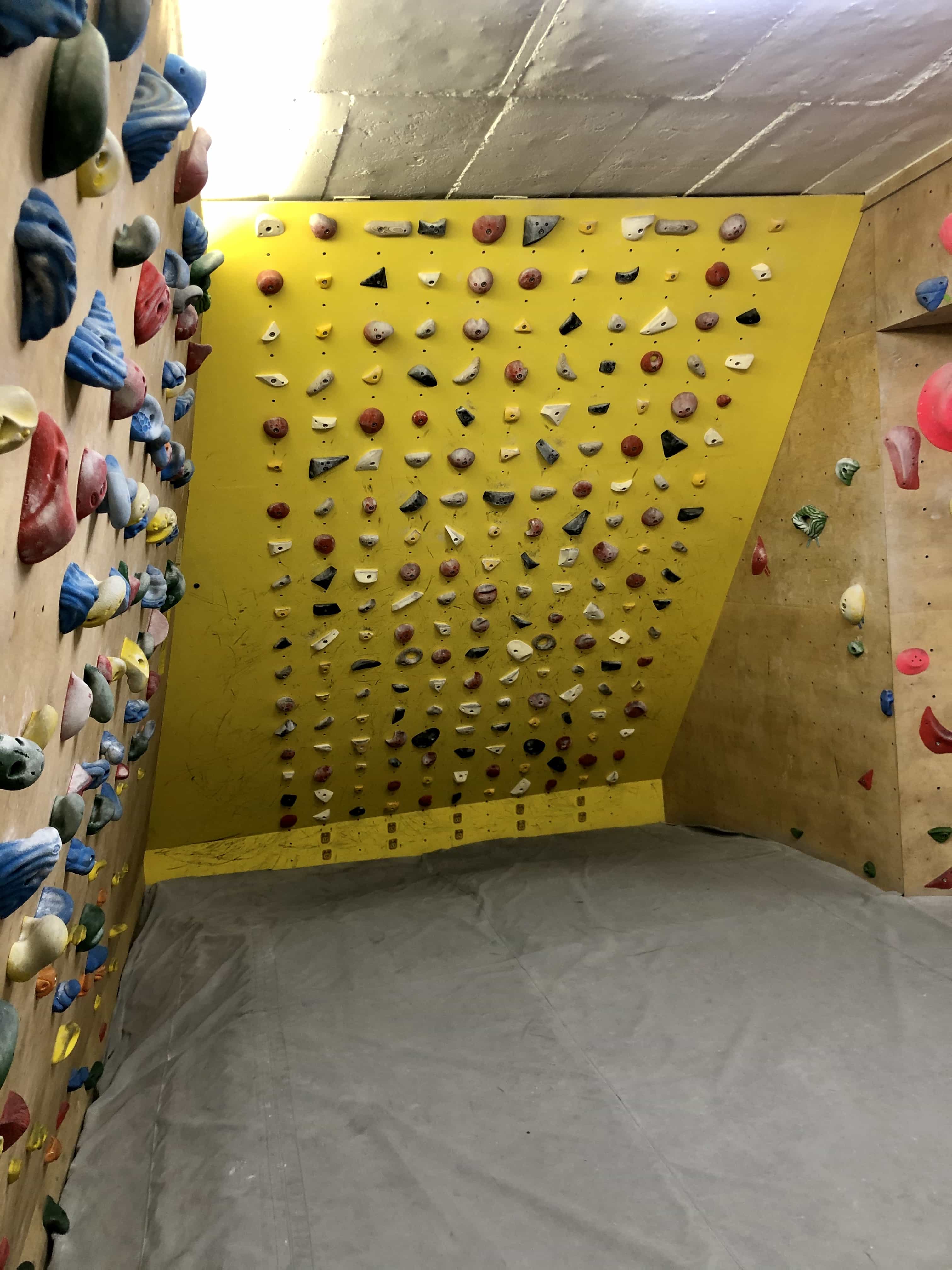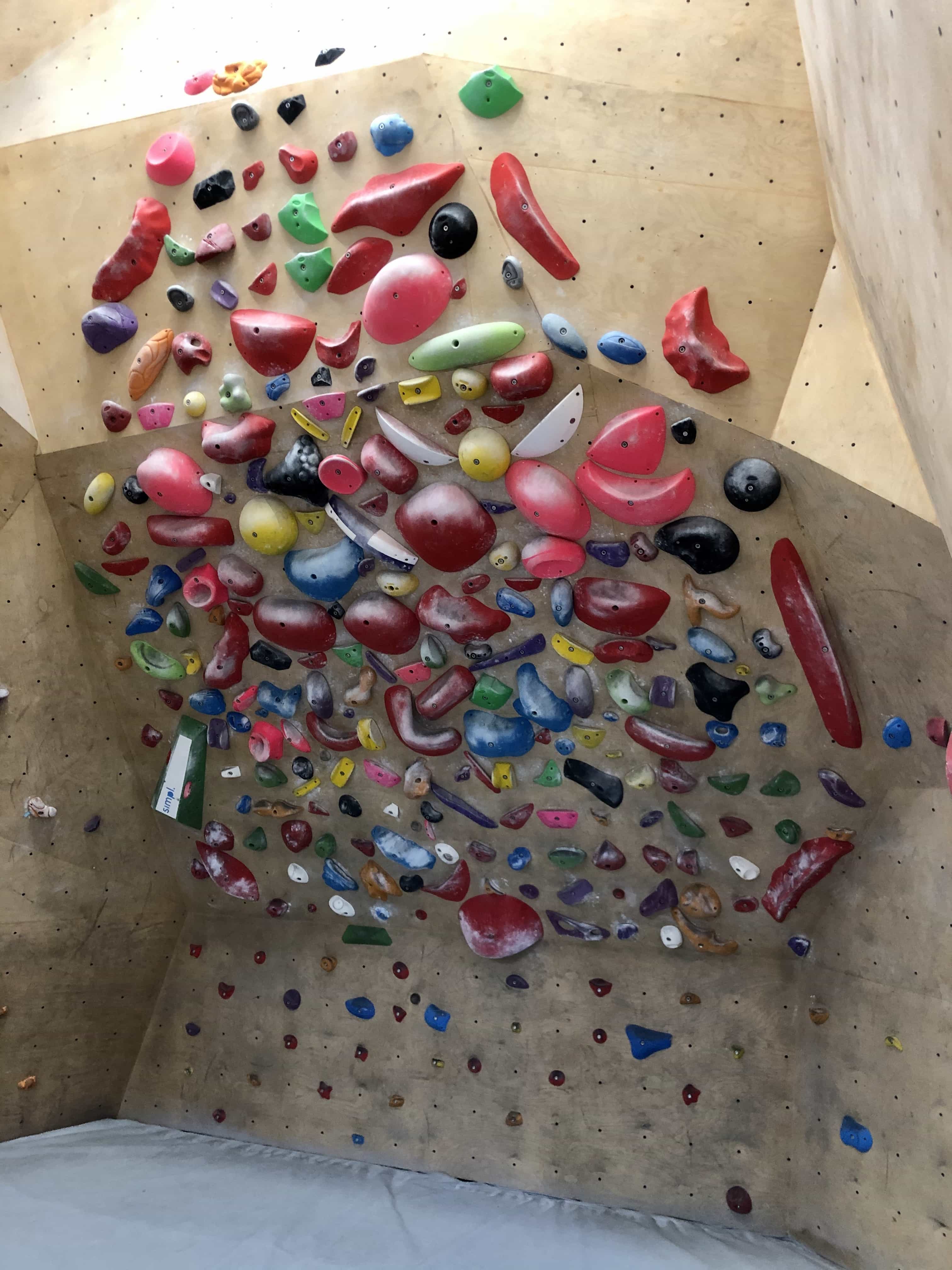What is a boulder problem?
A fixed sequence of holds make up a climb. In bouldering, climbs are referred to as problems.
Problems in BoulderBox are all color-coded. What that means is when you climb a problem of a certain color, you use both your hands and feet on the same colour of holds throughout your climb and finish on the same color only. See 2 examples below: one of a red problem and one of a light green problem.
You can’t interchange and use holds of different colors in between.


Black/natural colored flat wooden panels in BoulderBox are called volumes.
Volumes are a part of all boulder problems. This means that you are able to use volumes in between holds of different boulder problems to complete it.

Note that colored holds are often attached on top of volumes. These holds are only part of boulder problems of their respective colors.

How do you climb a Boulder Problem?
The starting point are the two tags at the beginning of a problem.
One hand must go on each tagged hold (see image below). If a hold has two tags then while starting, both hands must be on that single hold.


Once you have placed your hands on the correct holds, you need to take your feet off the floor using either the same color holds, volumes, the wall itself or absolutely nothing.
Then move towards the finishing point which is the last hold on a problem and will have one tag underneath it (see image below). If it does not have a tag underneath then you are supposed to “top-out” the climb. See the next point on what a “top-out” means.

A top-out is when you must climb over the climbing wall itself, as seen in the image below. Such a problem will not have a last finishing tag.

It's good practise to check out the entire sequence of a boulder problem before you start climbing it to know where it ends.
What is a Moonboard?
A moonboard is an advanced standardized training wall.
It is a great way to train if you’re an experienced climber. You may not find the moonboar so functional unless and until you’re climbing grades between V4 to V5. And therefore, as a beginner, we don’t recommend getting on this board. If you have questions or are curious, please get in touch with our staff.

What is a spam wall?
As the term suggests, a spam wall is a wall spammed with a variety of holds. There are two spam walls in BoulderBox. They offer infinite possibilities. The advanced spam wall is in the 1st basement and the beginner friendly wall in the 2nd basement. The advanced wall is also visible from the reception area. You can create your own problems on the two walls by creating a sequence of different holds.

How do I use the training area?
Good question! Before you start using the training area, we recommend that you consult one of our staff. Uninformed or training based on observation may result in injuries.



